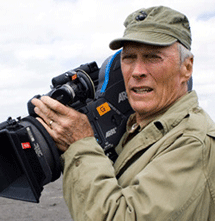 Film Studies: War is hell – PR isn’t much better
Film Studies: War is hell – PR isn’t much better
By David Thomson
Iwo Jima was an island about 500 miles south of Tokyo. It was volcanic, and it was known for its black sand. Like many islands in the Pacific, it was not much to speak of and not valuable to hold. But it lay directly in the path of America’s theoretical invasion of Japan. Moreover, Japanese forces had occupied the island and prepared their positions. Iwo Jima had to be attacked. The battle was fought in February and March of 1945, and when it was over the Japanese losses were 20,000 while 26,000 American Marines had been killed.
These deaths were a vital part of the calculation that a direct assault on Japan would result in as many as half-a-million losses. It was in July that the atom bomb would be tested for the first time. And by then, America had thrilled to a journalistic photograph of a group of Marines raising the American flag on the shattered peak of Iwo Jima. In the photo, the flag is not yet upright and the Marines are labouring over it. It looks like a Rodin bronze. The composition is “perfect” – but sometimes photographs are like that, aren’t they?
This autumn that photo will live again in what may be not just the movie of the year, but one of those now rare occasions in which a mainstream entertainment picture captures the public spirit. Flags of Our Fathers…
may be a very important movie: only two weeks ago, with the opening and disappearance of All the King’s Men in just a few days, official Hollywood was prepared to say no more “important” pictures, no more great novels, no more portraits of America. Just give the kids what they want. The re-make of Robert Penn Warren’s novel, directed by Steven Zaillian, and with a dazzling cast (Sean Penn, Jude Law, Anthony Hopkins, Mark Ruffalo, Kate Winslet, Patricia Clarkson) was so complete and sudden a failure it left Hollywood power-brokers aghast at the condition of the audience.
But now people are seeing Flags of Our Fathers and beginning to marvel that Clint Eastwood, at 76, may have done it again. There have been books in recent years – by James Bradley and Ron Powers – that have reassessed the great photograph from the conclusion of the battle on Iwo Jima. I really don’t mean to spoil the movie for you. Let me just say that there is a “great” photograph by Robert Capa of a Republican infantryman being shot and killed in the Spanish Civil War. It was a photo used to raise money and recruits in the war effort. It is a photo that has graced museum walls. But, over the years, under steady and tender scrutiny by scholars, it has been effectively proved as not a superb piece of journalism but an event staged for public consumption.
What that does to the quality of the photo may seem a small worry. But it is not – not in a war effort that requires full democratic support. And to say nothing of wars that never achieve anything like that support, and which jump the gun by throwing “Mission Accomplished” parties.
Flags of Our Fathers is a film about 1945, based on extensive research into the lives of the real men in the photo. It is unblinkingly factual, and it is being made for 2006 and because of where we are now.
Hitherto, in movie history, Iwo Jima was the subject of the 1949 classic, Sands of Iwo Jima, in which John Wayne played Sergeant Stryker, who trains unruly Marines before the big battle. That was conventional legend-polishing, and it is a very well-made combat film.
Flags of Our Fathers depicts combat according to the standards achieved in Saving Private Ryan. It has an immense realism, and it tries to observe the soldiers as real, grumbling, frightened grunts, instead of men lusting to be part of a great image. Eastwood’s film is written by William Broyles and Paul Haggis, and it is co-produced by Steven Spielberg. It is the first film in which the balance of combat and public relations has been presented honestly.
It has a large cast and very few familiar faces. Eastwood has tried to make us believe in the ordinariness of these men. Not allowed to shoot on Iwo Jima, he went to Iceland instead and its own black sands. So, many of the extras and small roles are filled by Icelandic names. The credits are unexpected and charming, but I think viewers will forgive what is really a panorama of America and the world in 1945.
And this is what is far less well known. Apparently, as plans for the film were announced, a Japanese-American wrote to Eastwood and said, simply, don’t forget to show what the Japanese soldiers felt. Eastwood had trouble enough on his hands with a big war production. But he was struck by the letter, and he determined to make two films. The second is the battle of Iwo Jima as seen and felt by the Japanese. It will be in the Japanese language, but Eastwood has directed it himself. It will show early next year.
ATTENTION READERS
We See The World From All Sides and Want YOU To Be Fully Informed
In fact, intentional disinformation is a disgraceful scourge in media today. So to assuage any possible errant incorrect information posted herein, we strongly encourage you to seek corroboration from other non-VT sources before forming an educated opinion.
About VT - Policies & Disclosures - Comment Policy



